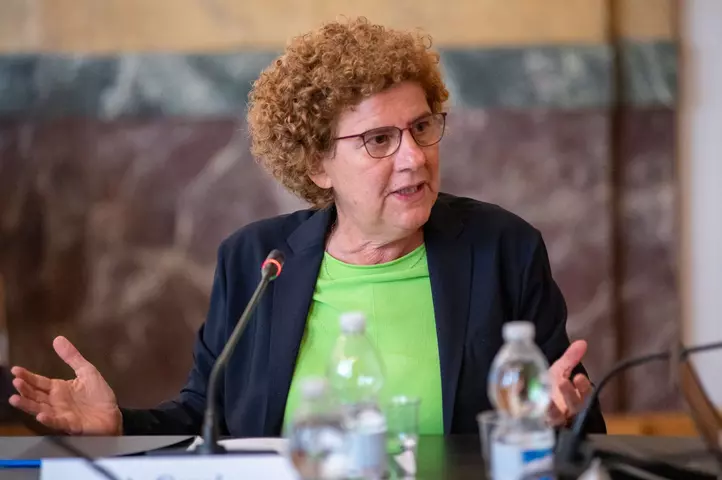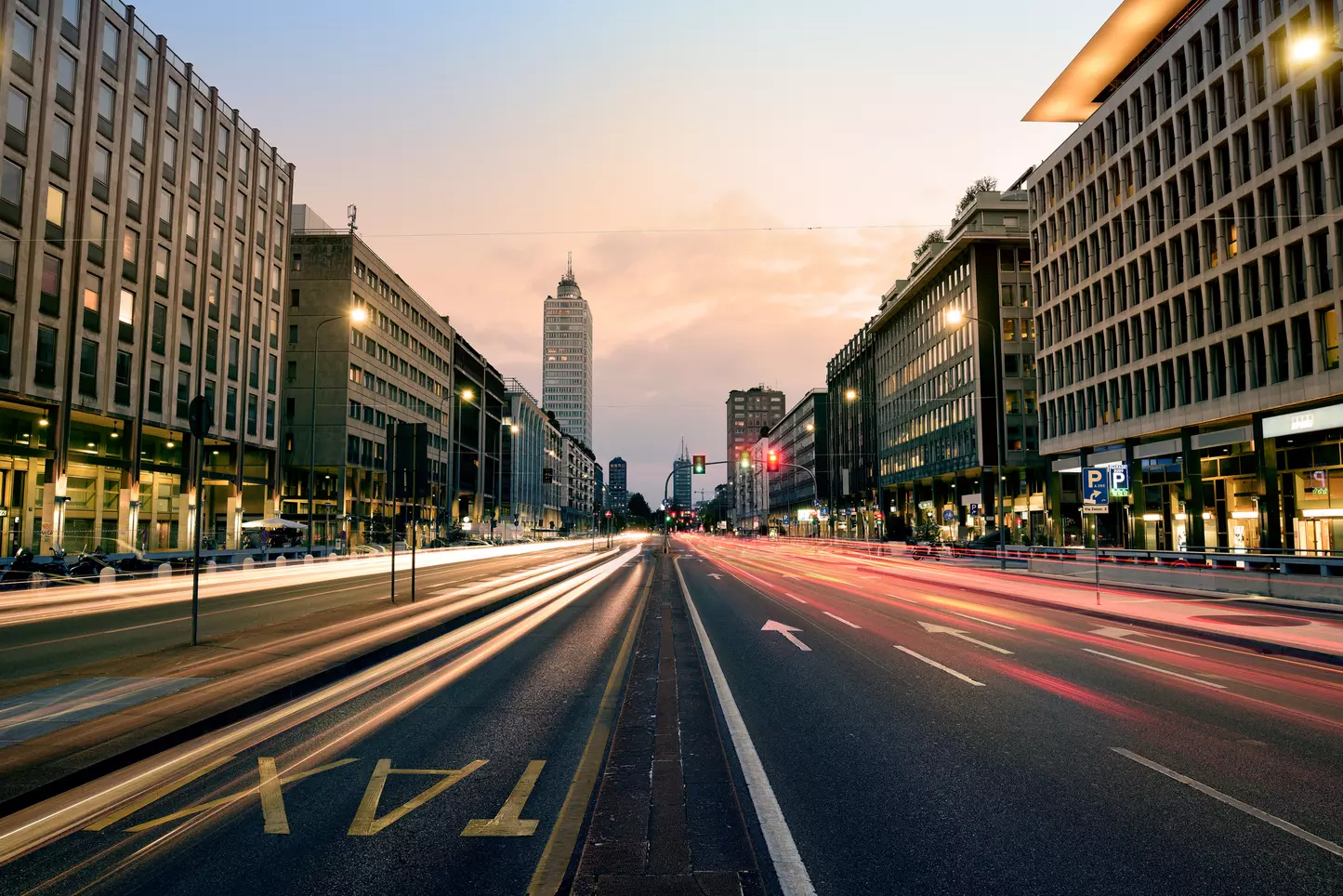“Cities are hubs of change and any form of innovation has specialisation and adaptation as its backbone. Every city is different and experiments with solutions on the ground: if everything was the same, what need would there be for technology and innovation?” From resources to bureaucracy, from construction sites to the needs of users: in the midst of the digital transition of mobility and local public transport, everything lies in the vision of Arianna Censi, councillor since 2021, in a Milan that is now more than ever a ‘living laboratory’ and in transformation.
The city's public transport system has five metro lines (102 kilometres), two of which were inaugurated in the last 11 years, in addition to 17 tram lines (157 km network), 135 bus lines and four trolleybus lines (covering approximately 1,500 km). The sharing offer is extensive: between cars, motorcycles, muscle and pedal-assisted bicycles and motorised scooters, there are about 20,500 vehicles in the city, 146.5 per 10,000 inhabitants.
Now, Milan is preparing to put all this online, as a living lab in the MaaS4Italy (NRRP funds) plan to digitise local public transport (TPL). Thousands of users were involved in testing the apps of the new MaaS operators, with 2,183 applications by late November (1,219 of which having made trips). In addition, the 90-91 circular bus route will be converted, by 2026, into a test circuit of the self-driving trolleybus. MaaS as a transformation of means, tools and ‘from one-to-many to many-to-one’ model, to quote Censi herself (in the picture below, En).

Councillor, can you explain this definition further?
“The evolution of public transport, especially road transport, will increasingly build its path according to the needs of users, harmonising them. Today, surface transport connects static stops: you stop at that time and at that point, always. I am convinced that it is possible to keep some of these stops and to build the route to meet the needs of people who, by booking on a platform, will be in the same place.”
In which areas of the city will it work best?
“This does not concern the dense city, but rather the suburbs or the supply service from the less urbanised outer areas. The city experiments with actions of this nature in some minimal places compared to the overall organisation, but the experience can be useful in different situations. Transformation can improve the level of LPT usage to enter large cities and allow people to take advantage of the opportunities that cities offer.”
The MaaS model adds a data sharing platform and MaaS Operators between transport operators and users. What are the difficulties in this scenario?
“MaaS Operators are obliged to accept everyone who wants to be placed on the platform, so that the citizen can use all coordinated movement vectors. We are discussing this with Rome, Naples and Turin to see how we can make this go smoothly and be competitive in providing the service with friendly pricing. It is one thing to inform about all types of transport, it is another to offer the best fare on the overall route. Providing something convenient, ecologically compatible and economically viable is a highly complex issue but also an element of competitiveness.”
Will the platform put private operators on an equal footing with public transport?
“This is impossible basically, LPT remains the backbone with 1.5 million people, the others will add to the intermodal systems, the private offer can be interesting and competitive on the last mile and in the outermost sections.”
MaaS as a tool to improve interchange with the hinterland?
“Of course, but we need to link the services and double the ones that are there. People in Milan use 30 per cent cars and 70 per cent public transport, for those from outside, the modal ratio is the reverse. There is a problem with the offer and the rail loop, for example, needs to be improved.”
MaaS means data. Are we in an environment available for data analysis and experimentation?
“A helpful environment does not change its rigid rules immediately but allows those who are experimenting to try and then adapts its rules to the results. The latest Highway Code goes in exactly the opposite direction. Cities are hubs of change, with their own history. They experiment with different solutions. They should exchange solutions, rules and good practices with each other. On the other hand, government and ministries must understand that change does not come from afar, giving unified answers is the enemy of any form of innovation.”
What are the difficulties for a municipality in Italy, at the administrative level, in implementing urban mobility experiments?
“We do many things under very strict constraints that don't help, because they don't allow us to focus on research. We have made ourselves available at the technical level with the Ministry as ‘guinea pigs’ to field-test innovations that will be useful for everyone, considering our applications as provisional. This applies to experimenting with autonomous driving, bound to environments, places and infrastructures, but also to robo-delivery, the living lab, the installation of cameras, the LTZ and much more. Useful issues to speed up and rationalise the city, enhance technical capabilities and generate a competitive and productive advantage for businesses, research and universities.”
What does the experiment for autonomous driving consist of?
“We will test the possibility of integrating it on the 90-91 trolleybus when legislation allows. It is a major technological innovation that will maintain that route, speed it up and adapt it by putting traffic lights, crossings and other road users in sync. The technology will improve the speed and fluidity of that transport, effectively creating a 24-hour-a-day, 365-day-a-year surface metro line, transforming a neglected line into an innovative one. While we are experimenting with technology, we are starting work to complete the reserved lane, where it is lacking. This will require 900 construction days, for works totalling approximately Euro 20 million.”
Will autonomous driving be a remedy for the driver shortage?
“For this problem we need a solution now, with a robust intervention in the national collective agreement.”
Will we ever get back to 2019 levels of LPT usage by citizens?
“We are partly getting there, but people no longer move every day as before and not always with the same means, but rather they differentiate. Sharing has seen a decrease in the number of rentals but an increase in mileage. Evaluations are qualitative not quantitative. We will come back more and in a different way. And that's not all....”
Go ahead.
“The National Transport Fund should double, in my opinion. In a transitional phase, it should increase the first year by 50 per cent and redistribute that 50 per cent not on the basis of the national criterion, but on the basis of the number of passengers and the quality of the service. It is no longer possible to distribute the same resources with the same methods, while some stand still and others like Milan have added two metro lines.”
